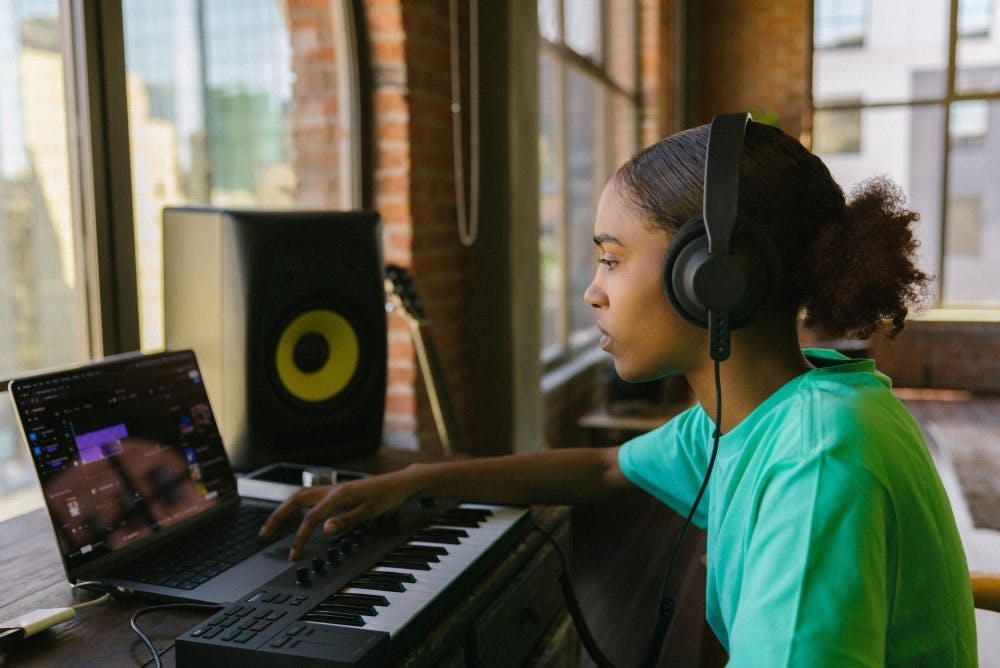The start of a new year brings about a chance to reflect on what went well over the past year and what we can improve upon during the upcoming year. Did you improve your skills? Your knowledge? Your desire to grow? Your income? Maybe you updated your equipment, your decor, or your monitoring system and acoustic treatment. We often gauge our growth by looking at what gear and software we’ve updated or purchased, but in order to move forward efficiently you’ll need to remove the clutter and distraction of everything that piled up around you during the past year. Here are our recommendations for your studio reset.
Assess Your Surroundings
Take the first few days of January to assess your workspace. Imagine that you’re a stranger walking into your room and think about the first thing a visitor will notice. What is eye-catching and what is messy, ugly, or strange? Over the past year, we got used to the clutter and makeshift arrangements that came about while we worked furiously on our projects. Now it’s time to organize all that clutter. Put away the cables that you used in March. Test and throw away the pens that didn’t work when you needed them. Toss or file (or take a photo of) the scraps of notepaper and receipts that pile up on all the flat surfaces.
During this survey, find all the books, meters, adapters, power supplies, and other knick-knacks that were used and put aside, but never put away. Clear this clutter and dust off the surfaces they were on! It’s also a good time to see which items have good batteries, dead batteries and which ones need a special power supply. Remove all the batteries from items that only get used once or twice a year, like certain guitar pedals, tuners, SPL meters, and the remote control for your DSLR. Dead batteries get thrown away before they leak and fresh batteries should be kept in a handy location. Label any power supply that belongs to a specific device and store the power supply with the device so you can find it when you need it.
You probably had a lot of ZOOM calls last year year, so let’s take this time to evaluate the look of our surroundings. Straighten out your artwork and acoustic panels. Dust off your bookshelf and books. Adjust your lighting. Take a look at some online videos and see how others stage their backgrounds. Keep your acoustic treatments in order, but a strategically placed lamp, plant, or record player will add character and interest to your online image.
Connect with Your Gear
Check the wiring to your interface, speakers, video displays, and hard drives. Tighten any loose connections and make sure any excess cable is not knotted up or wrapped around chair legs, table legs, or other cables. Wipe down cables with a dust-cloth – we like microfiber cloths or paper towels dampened with Simple Green or another water-based cleaner. Don’t use chemical cleaning products on rubber, plastic, or computer screens unless you know they are safe. Microfiber cloths work well for general dusting duties.
While you’re at it, unplug and reset USB, Firewire, audio, and power connectors. Connectors can become loose, partially unplugged, or even oxidized, so unplugging and re-plugging connectors will clean and solidify the connection. Plus, checking out the connections will keep you in touch with how your devices are connected and what kind of cables are in use. If you have outboard racks of gear, you may want to get behind them to dust and firm up those connections, as well.
Data Backup
Now is a great time to reassess your data backup plan—or implement one if you don’t already have one. As an exercise, imagine that you boot up your studio computer and your hard drive is damaged and all the data is lost. Now imagine that your external drives are also damaged, stolen, or somehow destroyed. What data would you lose and how would you get back to work?
At a minimum, you should have a backup/clone drive for your computer’s system drive and a backup drive for your work drive. You aren’t still creating music projects on your system drive, are you? You should re-read our blog on backup strategies, but let’s go through the bare minimum backup routine you should implement.
- Your internal system drive should be cloned to an external drive at least every couple of weeks. We recommend using an inexpensive USB drive and connecting it once a week. We like Carbon Copy Cloner to create an exact clone of the system drive. This drive will save you if your system drive fails or becomes corrupted. You can simply replace your system drive, boot from the USB drive, and clone it back to my new system drive.
- Each day, after you finish my work, we recommend running Chronosync software and backup the session work drive that contains all of your DAW sessions. These sessions are backed up to an external drive that you only turn to run the backup. This process takes less than 10 minutes and ensures that you never lose a day’s work, which would be a disaster to your clients and yourself.
- Beyond these steps, you should keep a copy of all your data offsite. You may choose a cloud-based backup solution or simply take secondary backup drives to another location.
A Fresh Start
Take this week to tidy up and reacquaint yourself with your room and gear. Starting the year with a clean and well-organized workspace will inspire your creativity and put to rest some of the worries in the back of your mind. A few well-spent hours will pay you back in spades!




